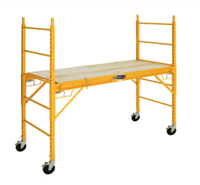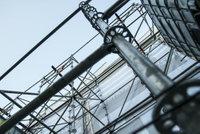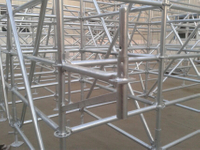Content Menu
● Introduction to Scaffolding Safety
>> Importance of Safety Training
>> Role of Supervisors
>> Legal Compliance
● Setting Up the Scaffolding
>> Step 1: Inspect the Site
>> Step 2: Choose the Right Scaffold
>> Step 3: Assemble the Scaffold
>> Step 4: Secure the Scaffold
● Safety Precautions
>> Fall Protection
>> Ladder Safety
>> Regular Inspections
>> Weather Conditions
>> Electrical Safety
● Special Considerations for 40 Foot Ladder Scaffolding
>> Height and Stability
>> Access and Egress
>> Load Capacity
● Advanced Safety Measures
>> Scaffold Design
>> Technology Integration
>> Emergency Procedures
● Case Studies and Examples
>> Successful Scaffold Projects
>> Lessons Learned from Accidents
● International Safety Standards
>> OSHA Guidelines
>> European Safety Standards
● Conclusion
● FAQ
>> 1. What are the key safety considerations when setting up a 40 foot ladder scaffolding?
>> 2. How often should scaffolding be inspected?
>> 3. What type of training is required for workers using scaffolding?
>> 4. Can a 40 foot ladder scaffolding be used in windy conditions?
>> 5. How should ladders be used to access a 40 foot scaffolding?
● Citations:
Safely using a 40 foot ladder scaffolding requires careful planning, thorough inspection, and adherence to safety guidelines. This article will guide you through the essential steps and considerations for setting up and using such scaffolding safely.
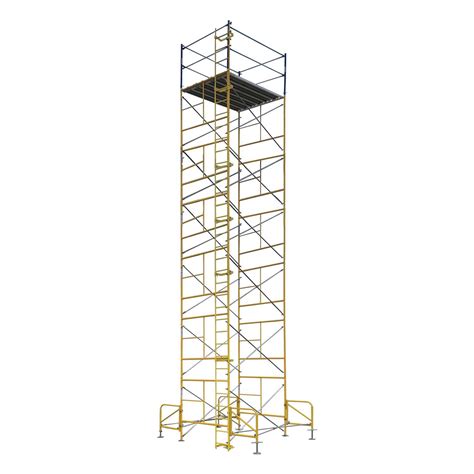
Introduction to Scaffolding Safety
Scaffolding is a crucial tool in construction and maintenance projects, providing a stable platform for workers to perform tasks at heights. However, it poses significant risks if not used properly. The Occupational Safety and Health Administration (OSHA) and other safety organizations have established guidelines to minimize these risks.
Importance of Safety Training
Before using any scaffolding, including a 40 foot ladder scaffolding, workers must receive proper training. This training covers topics such as scaffold assembly, safety inspections, and fall protection. Ensuring that all workers understand and follow these guidelines is essential for preventing accidents.
Role of Supervisors
Supervisors play a critical role in ensuring safety protocols are followed. They must oversee the assembly and inspection of scaffolding, ensure that all workers are properly trained, and enforce safety rules.
Legal Compliance
Compliance with local and national safety regulations is mandatory. Failure to comply can result in fines and legal action.
Setting Up the Scaffolding
Step 1: Inspect the Site
Before setting up the scaffolding, inspect the site for any hazards such as uneven ground, power lines, or other obstacles. Ensure the area is clear of debris and obstructions.
Step 2: Choose the Right Scaffold
Select a scaffold that is appropriate for the task and the height required. For a 40 foot ladder scaffolding, ensure it is designed to support the weight of workers and materials.
Step 3: Assemble the Scaffold
Follow the manufacturer's instructions for assembling the scaffold. Ensure all connections are secure and that the scaffold is level and stable.
Step 4: Secure the Scaffold
Secure the scaffold to prevent movement. Use tie-offs or outriggers as needed to ensure stability.
Safety Precautions
Fall Protection
Use fall protection equipment such as harnesses and lanyards when working at heights. Ensure that all workers are trained in the use of this equipment.
Ladder Safety
When using ladders to access the scaffold, ensure they are placed on a firm, level surface and secured at the top. Never lean over the side of a ladder to reach for something.
Regular Inspections
Regularly inspect the scaffold for any damage or wear. Make repairs promptly to prevent accidents.
Weather Conditions
Monitor weather conditions closely. Work should be halted during strong winds, heavy rain, or other hazardous conditions.
Electrical Safety
Ensure that scaffolding is kept at a safe distance from power lines. Use non-conductive materials when necessary.
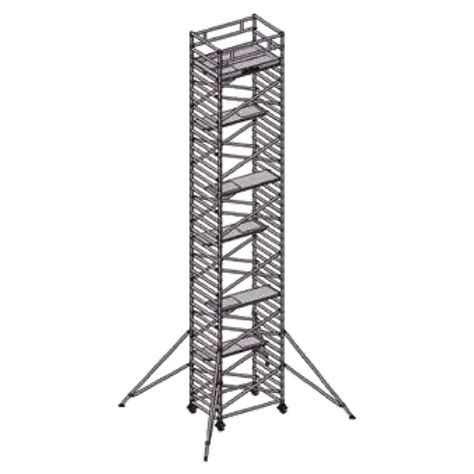
Special Considerations for 40 Foot Ladder Scaffolding
Height and Stability
At 40 feet, the scaffold is particularly susceptible to wind and other environmental factors. Ensure it is securely tied off and that workers are aware of weather conditions.
Access and Egress
Use proper access methods such as stairways or ladders designed for the scaffold. Never use cross-braces as a means of climbing.
Load Capacity
Ensure that the scaffold does not exceed its load capacity. Calculate the total weight of workers, tools, and materials to ensure safety.
Advanced Safety Measures
Scaffold Design
Consider using scaffolding with advanced safety features such as guardrails and toeboards to prevent falls.
Technology Integration
Utilize technology such as sensors and monitoring systems to detect potential hazards and alert workers.
Emergency Procedures
Establish clear emergency procedures in case of accidents or equipment failure. Ensure all workers know what to do in an emergency.
Case Studies and Examples
Successful Scaffold Projects
Review case studies of successful scaffold projects to understand best practices and how they were implemented.
Lessons Learned from Accidents
Study accidents involving scaffolding to learn from mistakes and improve safety protocols.
International Safety Standards
OSHA Guidelines
Familiarize yourself with OSHA guidelines for scaffolding safety in the United States.
European Safety Standards
Understand the safety standards set by the European Union for scaffolding use.
Conclusion
Safely using a 40 foot ladder scaffolding requires meticulous attention to detail and adherence to safety protocols. By following the guidelines outlined in this article, workers can minimize risks and ensure a safe working environment.
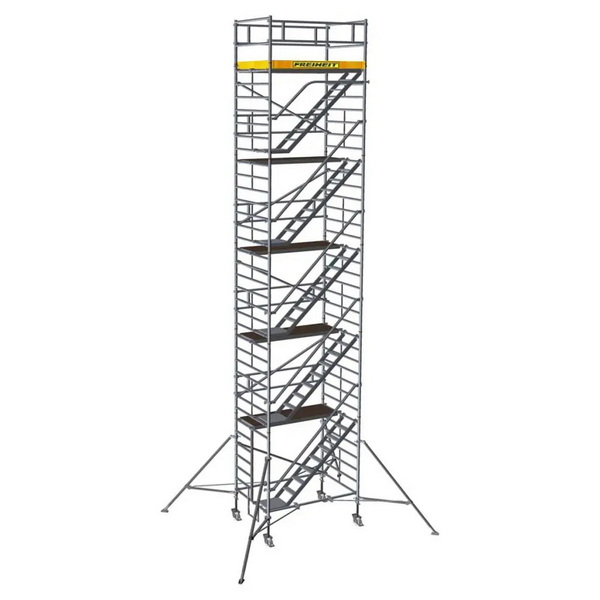
FAQ
1. What are the key safety considerations when setting up a 40 foot ladder scaffolding?
Key safety considerations include ensuring the scaffold is on a firm, level surface, securing it to prevent movement, and using proper fall protection equipment. Regular inspections are also crucial to identify any potential hazards.
2. How often should scaffolding be inspected?
Scaffolding should be inspected before each use and after any changes or repairs. Regular inspections help identify potential hazards and ensure the scaffold remains safe for use.
3. What type of training is required for workers using scaffolding?
Workers must receive training on scaffold assembly, safety inspections, fall protection, and proper use of scaffolding equipment. This training is essential for preventing accidents and ensuring compliance with safety regulations.
4. Can a 40 foot ladder scaffolding be used in windy conditions?
While a 40 foot ladder scaffolding can be used in windy conditions, it must be thoroughly secured and workers should be aware of the increased risk. Work should be halted if winds exceed safe limits.
5. How should ladders be used to access a 40 foot scaffolding?
Ladders should be placed on a firm, level surface and secured at the top. Ensure the ladder extends at least three feet above the landing surface and is tied off to prevent slipping.
Citations:
[1] https://physicalplant.wisc.edu/wp-content/uploads/sites/23/2017/01/PP-SafetyManual-40.pdf
[2] https://www.youtube.com/watch?v=VVDheBaazxo
[3] https://pmc.ncbi.nlm.nih.gov/articles/PMC2710809/
[4] https://www.xitraining.co.uk/component/phocadownload/category/10-pasma-info?download=13%3Ascaffold-guide
[5] https://www.youtube.com/watch?v=gFBKN5RsEZY
[6] https://www.bbc.com/learningenglish/chinese/features/q-and-a/ep-200318
[7] https://penncoatinc.com/scaffolding-safety-tips/
[8] https://www.youtube.com/watch?v=FXXkbpkewoY
[9] https://www.ccohs.ca/oshanswers/safety_haz/ladders/portable.html
[10] https://www.davidson.edu/offices-and-services/environmental-health-and-safety/occupational-safety/ladders-and-scaffolding













